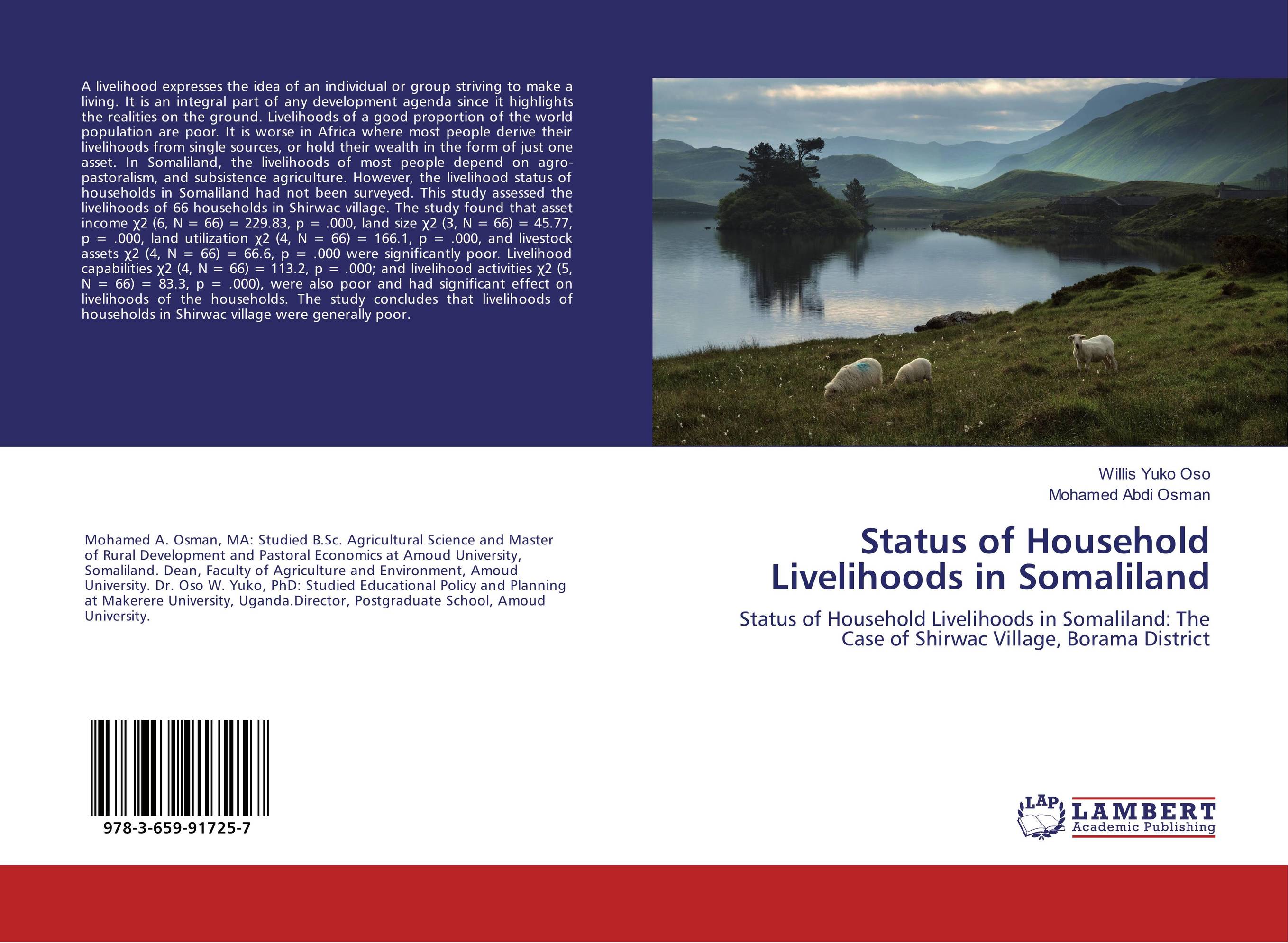| Поиск по каталогу |
|
(строгое соответствие)
|
- Профессиональная
- Научно-популярная
- Художественная
- Публицистика
- Детская
- Искусство
- Хобби, семья, дом
- Спорт
- Путеводители
- Блокноты, тетради, открытки
Status of Household Livelihoods in Somaliland. Status of Household Livelihoods in Somaliland: The Case of Shirwac Village, Borama District

В наличии
| Местонахождение: Алматы | Состояние экземпляра: новый |

Бумажная
версия
версия
Автор: Willis Yuko Oso and Mohamed Abdi Osman
ISBN: 9783659917257
Год издания: 2016
Формат книги: 60×90/16 (145×215 мм)
Количество страниц: 64
Издательство: LAP LAMBERT Academic Publishing
Цена: 21414 тг
Положить в корзину
| Способы доставки в город Алматы * комплектация (срок до отгрузки) не более 2 рабочих дней |
| Самовывоз из города Алматы (пункты самовывоза партнёра CDEK) |
| Курьерская доставка CDEK из города Москва |
| Доставка Почтой России из города Москва |
Аннотация: A livelihood expresses the idea of an individual or group striving to make a living. It is an integral part of any development agenda since it highlights the realities on the ground. Livelihoods of a good proportion of the world population are poor. It is worse in Africa where most people derive their livelihoods from single sources, or hold their wealth in the form of just one asset. In Somaliland, the livelihoods of most people depend on agro-pastoralism, and subsistence agriculture. However, the livelihood status of households in Somaliland had not been surveyed. This study assessed the livelihoods of 66 households in Shirwac village. The study found that asset income ?2 (6, N = 66) = 229.83, p = .000, land size ?2 (3, N = 66) = 45.77, p = .000, land utilization ?2 (4, N = 66) = 166.1, p = .000, and livestock assets ?2 (4, N = 66) = 66.6, p = .000 were significantly poor. Livelihood capabilities ?2 (4, N = 66) = 113.2, p = .000; and livelihood activities ?2 (5, N = 66) = 83.3, p = .000), were also poor and had significant effect on livelihoods of the households. The study concludes that livelihoods of households in Shirwac village were generally poor.
Ключевые слова: Activities, assets, Capabilities, Household, livelihood



